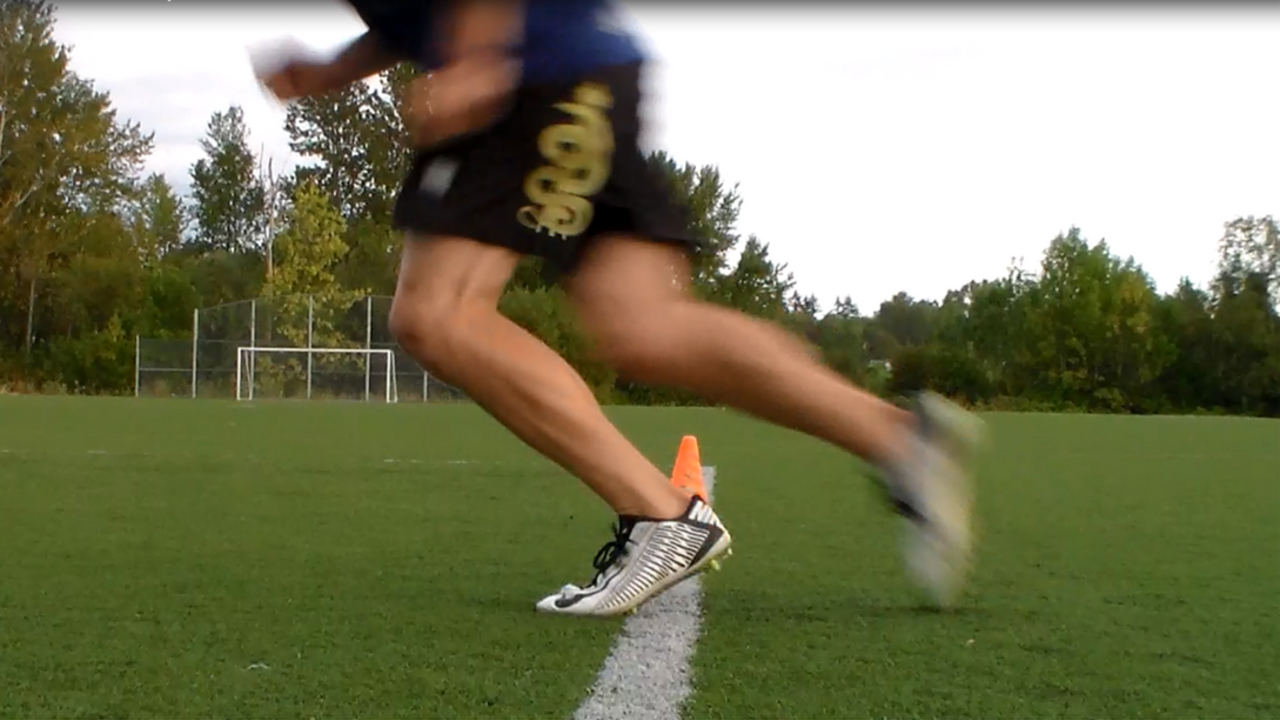Speed and Agility Training 101

Speed and agility work can be difficult to do correctly if you’ve never done it under professional supervision. The workouts don’t feel like conditioning workouts. They are different than anything you’d experience in a fitness class. It can be unnerving to do workouts that are different than what you’ve done before or different than what your friends are doing. I hope a better understanding of speed and agility work will give you confidence in executing the type of work you need for better ultimate performance.
In this article I will to explain how adaptation to speed and agility works and give you a short example speed, agility, and quickness (SAQ) module to try for yourself!
Quick science lesson
In order to train any athletic quality properly, you need to understand how that athletic quality works in order to drive adaptation.
Movements like jumping and acceleration use primarily the phosphagen pathway of energy production. The phosphagen system is the metabolic system that produces ATP (required ingredient for muscle contraction) in the shortest amount of time. It is fueled by creatine phosphate (CP) stored in the muscles. Problem is that there are limited stores of CP in the muscles. So this system only works for about ten second of maximal effort.
After ten seconds, the CP stores need to be replenished before another bough of maximal effort. Most players, left to their own devices, do not rest enough between bouts of SAQ work. Without sufficient rest periods, adaptations to speed, agility, and power production will be limited.
The general rule is that you need 10-12 seconds of rest per second of output in order to replenish your CP stores between repetitions. In truth it can take 3-5 minutes depending on the length and intensity of effort. For higher level athletes who are able to recruit a higher percentage of motor units in the muscles, more rest will be required versus less trained athletes.
Adaptation Driven by Intensity
Intensity in about the output not about the effort. In order to get adaptation to SAQ training, the training stimulus must be done at or above 90% of your current maximum ability. If your max vertical jump is 20 inches, executing a jump above 18 inches will cause your body to adapt to jump higher. Any jump executed below 18 inches does not promote physical adaptation
Scheduling your SAQ training so that it’s done while you’re able to perform at max intensity is important. This means not doing SAQ work at the end of practice. Sometimes it may mean not doing is the day after a heavy leg day in the gym. Doing vertical jump training or SAQ drills at the end of practice when you’re too tired to perform near your max capability won’t really get you anywhere.
Why is it so easy to do incorrectly?
Ultimate players are a masochistic bunch. We play ultimate primarily tournament style with multiple games, sometimes back to back, in a weekend. We glorify teams and players who play savage. This ethos draws athletes who like the feeling of complete exhaustion after a weekend.
But the type of training that leads to greater adaptation in speed and agility often does not feel difficult in the same way that a team track workout feels difficult. I believe ultimate players (and the non-athlete population) have a difficult time trusting in training that they cannot immediately feel. There is no increased heart rate, there is no “feeling the burn.” Those feelings are indicators that you’re using primarily the aerobic or anaerobic metabolic pathways in your training. But training the phosphagen system and the nervous system do not give you any direct indicators that you’re doing the work. The payoff does not come immediately in how you feel right after the workout. It comes later, often gradually, with increased performance.
Sample SAQ Module
Start with a good multidirectional warm up (here’s a simple warm up if you don’t have one)
Now we’ll focus on three exercises with appropriate rest intervals in between. The entire session will take about 25 minutes including your warmup.
3 Step Approach Jump
Works on the footwork and explosiveness needed for getting discs in the air on the move. If you have a visual aid to focus on like a vertec or a friend standing on something holding a disc that’s even better.
- Jump off the right foot, rest 30 seconds
- Jump off the left foot, rest 30 seconds
- Repeat twice
- Rest 60-90 seconds before the next exercise
Gallop
Looks ridiculous, but this is one of my favorite single leg plyometric exercises. Focus on slamming your front foot into the ground to catapult yourself both up and forward as explosively as possible.
- 6 strides right foot forward, wait 30 seconds
- 6 strides left foot forward, wait 60 seconds
- Repeat three times
- Rest 90-120 seconds before the next exercise
Three Point Start to 40 yard sprint
This drill is about pure acceleration. If you’re not comfortable in a three point position, it’s fine to start standing up with one leg slightly in front of the other. Attempt to get up to full speed as quickly as possible.
- Start with right foot forward and sprint 40 yards, rest 90 seconds
- Start with the left foot forward and sprint 40 yards, rest 90 seconds
- Repeat three times
Want More?
Try the above SAQ module twice per week for 4 -6 weeks. If you want more SAQ work along with a complete strength and conditioning plan that tells you exactly what to do and when, check out The Ultimate Athlete Project. For a program focused only on speed and agility, check out our six week Agility for Handlers program.

